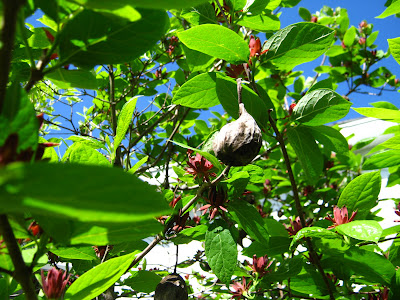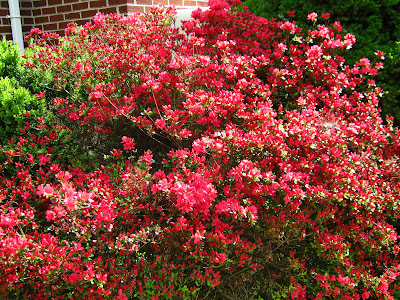I am in India on a very different mission and plan then I have ever been before. I'm with the International Summer School for Jain Studies
 and they are organizing and paying for just about everything. We have classes every morning and free time for studying/adventures in the afternoon. Thus far we've been to Delhi (please, no link, you've been paying attention to the blog or the world), Muradabad and now we are in Jaipur, the Pink City. It's in western India, in the middle of the desert state of Rajasthan. Jains aren't very populous anywhere, but there are lots around here. 12 or so of us, with not so important variations in personnel from time to time, have really gelled very well and are having a great time.
and they are organizing and paying for just about everything. We have classes every morning and free time for studying/adventures in the afternoon. Thus far we've been to Delhi (please, no link, you've been paying attention to the blog or the world), Muradabad and now we are in Jaipur, the Pink City. It's in western India, in the middle of the desert state of Rajasthan. Jains aren't very populous anywhere, but there are lots around here. 12 or so of us, with not so important variations in personnel from time to time, have really gelled very well and are having a great time. We started off at Jaipur Foot and while that was wonderful, I need to move on to the evening. These guys provide artificial limbs, free, for 20k folks a year. Good stuff--Jainism at its best.
We started off at Jaipur Foot and while that was wonderful, I need to move on to the evening. These guys provide artificial limbs, free, for 20k folks a year. Good stuff--Jainism at its best.But tonight, Brad Boileau of Ottawa, student of Anne Vallely, had organized a trip to Padampura. It's a tiny little rural village
 with a big, big temple. The temple history is interesting--a naturally occurring image of the Lord Mahāvīra was found in a local field, and the locals all put together some land and built a huge temple.
with a big, big temple. The temple history is interesting--a naturally occurring image of the Lord Mahāvīra was found in a local field, and the locals all put together some land and built a huge temple. The place is awash in parrots
The place is awash in parrots and peacocks,
and peacocks,
and for all we could tell, pretty dead. We walked around and made friends with some of the locals
 [that's Kayla ticking off a 'this year in India goal'] and looked around the temple until 7:30ish, sort of nightfall, when the real action starts. Here's where I run out of pictures.
[that's Kayla ticking off a 'this year in India goal'] and looked around the temple until 7:30ish, sort of nightfall, when the real action starts. Here's where I run out of pictures.We had come because the anthropological dope says there are exorcisms here. As the evening prayers started up, a man entered in orange robes, and opened up the glass enclosure housing the main image. THere was an area roped off in front, and as far as I could see, 5-6 women placidly sitting there. One older woman in there leaned against a pillar and yelled हमे छोड दें (hame choḍ deṃ, let go of me) a few times, but nothing out of line. I saw one man carry a 10-12yo girl in, and I guess he set her down in that area too.
The pujāri added a crown to his orange robes, lit up a few oil lamps on a metal tray, and people started praying. Someone has some audio of that, maybe we'll see that surface eventually. As the prayers get louder people start clapping, the pujāri is waving around the lamps, and the women in front of the statue begin writhing, swinging their hair around, and beating on the floor. As the intensity of the prayers increased so did their swinging heads. Women with their hair loose and shaking their hips on the floor is pretty licentious for India. This went on for maybe ten minutes. Some of the women also beat on the lower part of the enclosure holding the statue.
When the prayers stopped, a couple of the woman went limp on the floor, but the youngest girl, who had been carried in, jumped up and rushed to another image at the back of the temple, and I heard some rather loud, violent metallic banging.
Most Jain temples have stainless steel tables in front of each image for people to leave small piles of rice for offerings, and also for oil from lamps to spill onto. Until now, I hadn't thought of this, but these things are pretty resonant when banged upon. Two of the girls took up position in front of the tables, and as the prayers started back up, they would punctuate the rhythm of the chanting by pounding, quite hard, on the table. They also continued to swing their heads in circles, whipping their hair around, and the 10yo would bend over double with her head between her legs, banging up and down. There were about 2 minutes of prayers at each station (the temple has Tirthaṃkar images at 8 spots around its perimeter) and the young girl would lead the procession off to the next stop. The other girl (15? 18?) would then roll along the floor along with the rest of the worshippers. After all 8 stations were done, the band proceeded outside to the front of the temple, I think perhaps to reverence the pillar that most Jain temples have out front,
 and then on to each of the outlying side temples in each of the four directions.
and then on to each of the outlying side temples in each of the four directions. Each of these has its own Jina image, but brass instead of marble like all the ones inside.
Each of these has its own Jina image, but brass instead of marble like all the ones inside.
By this point some of the gas had gone out of the afflicted girls' flailing, but at last the band of worshippers--perhaps 40-50 earnestly praying Jains, along with the pujāri, and some family members who were obviously attending to make sure none of the girls got too wild, and a dozen fascinated whitey anthropologists--wound up at the shrine to the kṣetrapāla.

Now, these guys are interesting. They are usually thought of as 'Hindu' or worldly gods, not transmundane liberated souls. They make many Jains a little nervous, but they are also highly venerated and often get more attention than the Jinas themselves, because they are available for petition while the Jinas are now decidedly beyond our phenomenal world.
Up till now, one or two of the girls would yell out from time to time when the prayers died down. More of that 'let go of me,' some stuff I didn't catch, and also पापी! साला! which literally translates to sinful! brother-in-law! but brother-in-law is a standard street insult, so I'm going to translate that as 'evil fucker!' and it was hard to tell whether this was directed toward the possessing spirit or was the voice of the spirit cursing the Jina.
Now, though, with prayers over and some people starting to disperse, 3-4 women were lying, spent, in front of the image, but the one who had rolled from one station to the next now began pacing up and down, and going on and on. Some of the other scholars got some commentary/translation from onlookers, and it sounded as though she was vocalizing a fight between the deity in the shrine and the spirit possessing her. From time to time she would stop and do the headbanging deal again. At one point she knocked her head off a pillar five times. She took one of the butter lamps off the altar, held the block of burning ghee in her hand and paced up and down. At one point I caught the word 'bitch.'
All this time, a much older woman stood at the altar, rocking much less violently, while her daughter [?] stood just next to her. The woman called out 'release me' from time to time, and her daughter seemed to be keeping up a cheerful and pleasant conversation with her all the while.
By the end of it, most of the possessed got up, tied back their hair, and walked off. The pacing girl, many of us and others agreed, started laying it on a bit thick. She marched up to Brad with his obligatory anthropologist's field notebook, and asked 'what are you writing?' She also said something about 'These guys are going to teach me English, then I can speak English to them." And at this point our drivers showed up crying that they needed to get back for another job [thinly veiled attempt to get home early] and we headed out.
This has been very long, and so I'm going to save all the analysis for another time, if ever. If nothing else the elements of the visual code being used here are worth thinking through, I think. All in all, quite a spectacle and quite a day.
And now Mexico is going to beat France. Hooray.





























 The house above is on the market - wonder why?
The house above is on the market - wonder why? 








